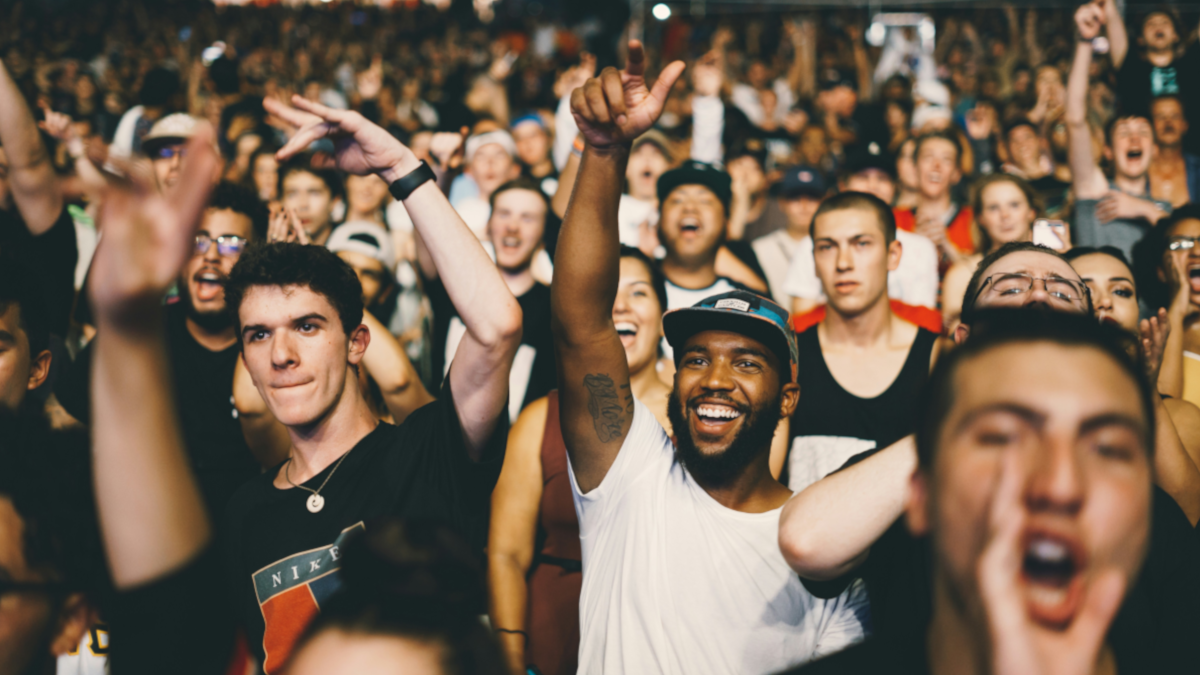From boycotting brands and gaming stocks to stopping commercial deals, the collective influence of online communities has become clear over recent years. When you pair this with the energy of avid fandom, you truly have a force to be reckoned with — one that can single-handedly tip the scales of inflation or stimulate local economies. With unrivalled scale, a plethora of tools at their disposal and a platform to galvanise themselves, is it fans that wield the real power?
From marginal to mainstream
Once seen as a niche interest reserved for teenagers and nerds, superfans are now a thriving force. Thanks to an increased ability to discover new passions and immerse ourselves in them, fan communities are becoming core to our online existence and identity. Over 60% of young people globally see themselves as a ‘superfan’ of something, while nearly two-thirds of fans see it as a defining part of their identity. And with more opportunities and tools at our fingertips than ever before, technology is enabling new ways of accessing and engaging with that fandom, allowing everyone to find like-minded people and cultivate our own communities.
Whether it is Beatlemania or Trekkies, fans have always occupied an important role in culture. However, that relationship has historically been one-way. As the technological landscape evolves, fans are gaining visibility and, with it, power — not just to help shape culture, but to actually define it.
From consumers to creators
As the internet has evolved, so too has the role of fans. Where fans were once merely consumers, they are now taking a significantly more active role. With the majority of us now comfortable posting our own content online, social media platforms are giving fans their own voice and stake in the conversation; meanwhile, increasingly advanced creative tools are allowing fans to make the content they want to see themselves. With the ability to clip, meme, remix and create content, fans are not only contributing to culture, but moving it forward.
This shift is putting more power in fans’ hands as creators of communities and content in their own right. In fact, audiences are just as likely to watch videos made by fans about something as they are the original content. This has given birth to a new form of media driven by ‘professional’ fans like Anthony Fantano (AKA @theneedledrop) and Cameron Kozak (AKA @kodak_cameron) who are not only garnering millions of followers and creating a living out of their fandom but, in turn, dictating the cultural conversation. In the case of fan fiction, writers like Anna Todd (of ‘After’ series fame) are even turning their fandom into careers as authors.
From parasocial to parakin
At a fundamental level, fandom is about connection — whether that is connection to the subject of your fandom or the community that surrounds it. However, the reach of social media is creating new expectations about our ability to connect and interact with brands and personalities online, which is in turn driving more rabid fandom.
While groups of superfans like Blackpink’s ‘Blinks’ can canvas support and game algorithms for you, by the same token, the visible and vocal withdrawal of their support can mean the loss of deals and revenue. Back in March, K-pop star Karina issued an apology to her fans in response to the outrage at the news she has a boyfriend.
Time will tell whether the recent upsurge in critical debate of Taylor Swift by ex-superfans will gain enough momentum to have an impact. Unlike one-sided parasocial relationships, fans are now able to actively participate in the creation of their idols and exert their power in shaping them.
When fans have the power to make or break something, it makes sense to reinvent the creative process by bringing them into it as early and as much as possible. From Charli XCX enlisting fans to collaborate on her album and the Dua Lipa video we made in collaboration with her fans to Grimes inviting creators to use an AI-generated version of her voice, it is those that tap into the creativity and passion of their fans that will benefit most from their loyalty. With around 1 in 4 new product launches failing in the first year, it makes sense that brands like Glossier, LEGO and Nike are building platforms in order to bring their communities in as collaborators on product development.
What does this all mean for brands?
The good news is that fans are happy for brands to get involved, so long as they can do it sensitively. Nearly two-thirds of fans enjoy seeing brands sponsor or create content related to their fandoms, while a similar number say that any brand can get involved so long as they make an effort to understand them.
The key to all of this is respect: respect the fandom and its universe; respect the fans themselves and the communities they have cultivated; respect the importance and purity of their experiences; respect their value as collaborators; and, perhaps most importantly, respect their power.
Featured image: Nicholas Green / Unsplash

